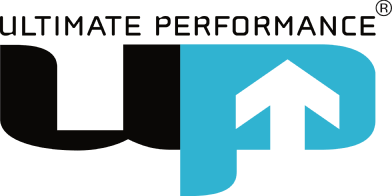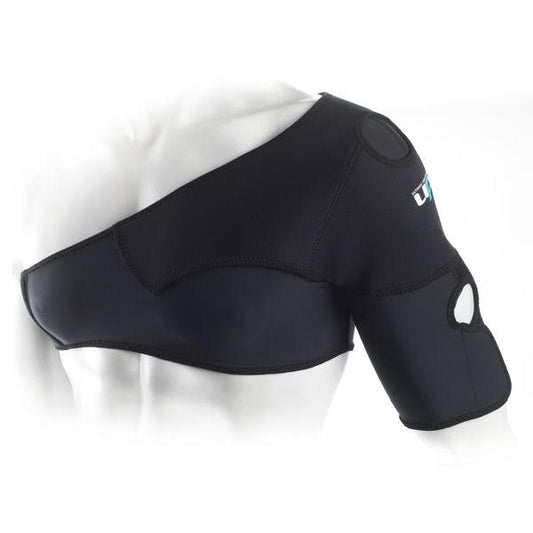Ultimate Performance Shoulder Supports are made from high quality neoprene and designed to help you recover from common shoulder injuries.
Which shoulder support is best for me?
The shoulder joint has a huge range of movement compared with the hip for example. As a result, it is more easily injured. Wearing a shoulder support helps restrict movement whilst healing, retains body heat and gives the wearer confidence.
What should you look for in a support for your shoulder and which injuries can they help with?
AC joint sprain
Acromioclavicular joint sprain is a tear of the acromioclavicular ligament at the top of the shoulder joint. It is often injured from falling onto an outstretched arm.
A shoulder support with additional straps such as the Advanced shoulder support is ideal for restricting movement and applying downwards pressure to the joint. This is important for preventing your shoulder from healing with a deformity or bump on the top. It is also great when used for keeping a cold gel pack in place.
Rotator cuff injuries
The rotator cuff consists of 4 muscles which are important for rotating the shoulder joint.
Depending on how bad your injury is, you will need a certain amount of support to restrict unwanted movement in the early stages. However, once the initial acute phase is over, heat retention from a basic shoulder support such as the Neoprene Shoulder Support will help your rotator cuff heal.
The neoprene retains your body's heat. As a result blood flow is increased which aids the healing process.
Dislocated shoulder
If you have a shoulder dislocation then seek medical attention as soon as possible. Do not attempt to reduce (relocate) the joint back into its socket yourself.
Once your shoulder has been reduced, it will be immobilised whilst it begins to heal. Initially this is likely to be in a sling. As you improve, a strong shoulder support/brace is ideal for protecting the joint.
Again, a shoulder brace with additional straps such as the Advanced Shoulder Support is the best option. It is especially important to have additional straps which run from the outside of the shoulder across the chest. This is to prevent your shoulder from turning outwards and upwards (external rotation and abduction) as this is the position it is most vulnerable and likely to dislocate again.
As the main function of a shoulder support is to restrict motion, don't expect to wear one and go straight back to playing badminton with overhead smash shots. If your shoulder support allows this range of motion then it is not providing much support.
Made with Neoprene materials that helps retain therapeutic body heat to relieve pain and speed up recovery.
Sport shoulder brace
Choosing the most appropriate shoulder brace/support for sport depends on which sport you do as well as your injury.
Racket sports & overhead activities
In general, shoulder supports aim to restrict movement of the shoulder joint and protect it. as a result, there is no point wearing a shoulder brace then expecting to play overhead shots in badminton, or practice the high bar in gymnastics. The products design prevents you from doing this.
Rugby, Football & contact sports
However, if your injury has healed but you still feel a little weak, or you want that bit more protection, then the Advanced Shoulder Support is one to consider. It provides a good level of support from the adjustable straps.
You still need to avoid overhead movements, but your shoulder has that extra protection. Depending on the level you play, you may need to check with your referee first.


